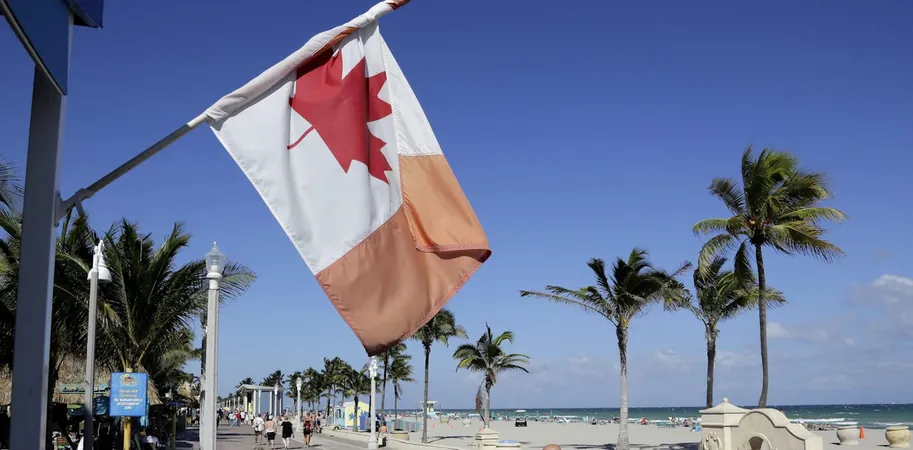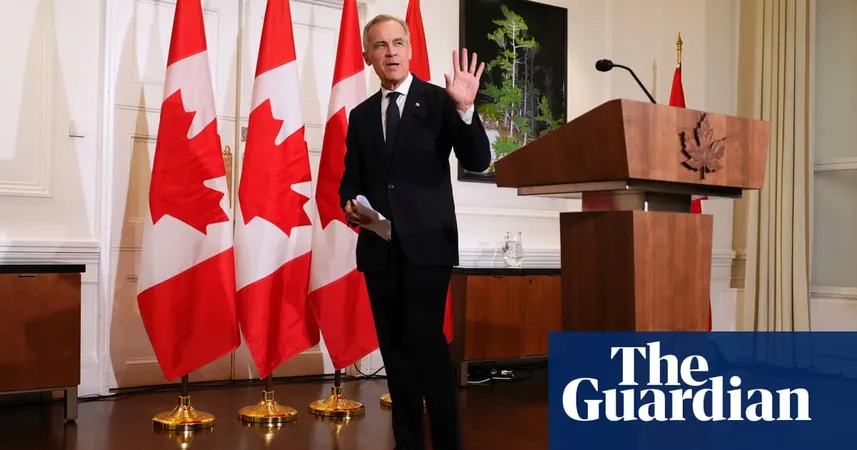
Canada's Snowbirds Face Major Shift: What Could This Mean for U.S. Communities?
2025-03-26
Author: Noah
Introduction
Every winter, a significant number of older Canadians, often referred to as snowbirds, traditionally migrate to the sunny United States for warmer weather. However, recent trends indicate that many of these snowbirds are reconsidering their travel plans, driven by a mix of political, financial, and logistical concerns.
Political and Financial Concerns
As tensions in U.S. politics escalate, some snowbirds have expressed their discontent by choosing not to head south this winter. Coupled with a struggling Canadian dollar, which weakens their purchasing power in the U.S., numerous Canadians are contemplating selling their winter homes across the border, a decision that could have rippling effects on local economies in popular regions like Florida.
Potential Border Regulation Changes
Concerns are also mounting over proposed changes to border regulations that could complicate or restrict long-term stays for Canadian visitors. The challenges posed by the COVID-19 pandemic made some Canadians wary of traveling, with many facing difficulties in crossing the border when travel restrictions were tight. While those hurdles did not deter all snowbirds during the pandemic, emerging uncertainties regarding cross-border travel are making many think twice this season.
Impact on U.S. Destinations
In 2023, a survey highlighted that eight of the ten top U.S. destinations for Canadians were located in Florida, which has been a perennial favorite for snowbirds. If a significant portion of Canadian snowbirds cancel their travel plans, officials in Florida should take note, as their economic influence is substantial.
Economic Statistics vs. Real Impact
Despite these rising concerns, Florida's Governor, Ron DeSantis, seemed unfazed, downplaying the potential effects of a Canadian boycott during a press briefing. He referenced tourism statistics showing that only 3.3 million out of 142.9 million visitors to Florida in 2024 were from Canada. However, this perspective neglects the fact that Canadian visitors comprise a noteworthy portion of international visitors to Florida, contributing significantly to local businesses and services.
Social Contributions of Snowbirds
Beyond mere economic statistics, the social implications of fewer Canadian snowbirds arriving in the U.S. are profound. Through years of research, it has become evident that these seasonal visitors contribute to local communities in ways that extend beyond financial contributions. Many snowbirds engage in community service, volunteer at hospitals, and participate in local health initiatives, enhancing social wellbeing and community bonds.
Healthcare Concerns in U.S. Communities
In places like Yuma, Arizona, where the seasonal population varies dramatically from summer to winter, the absence of snowbirds could lead to significant disruptions in health care services. Many local health systems adjust operations based on the influx of these temporary residents, and the loss of nurses and support staff from Canada could strain resources, potentially lowering the quality of care for the full-time residents.
Cultural Ties at Risk
Furthermore, the return of fewer snowbirds will likely have intangible social effects, marking a potential shift in the long-standing cultural ties between Canada and the U.S. Communities where Canadians and Americans have shared traditions and friendships could see these bonds weakening if Canadian travelers opt out of their usual winter escape.
Looking Ahead
With past experiences from the pandemic still fresh in memory, business owners in U.S. destinations voiced their concerns over losses incurred when fewer snowbirds traveled. This season could serve as a pivotal moment for both sides of the border, with Canadian communities likely needing to adapt to these new challenges while U.S. destinations redouble efforts to ensure they remain attractive and welcoming to their Northern neighbors. As this winter unfolds, it will be crucial to keep an eye on the decisions of Canadian snowbirds and the broader implications for U.S. locales that rely on their seasonal presence.









 Brasil (PT)
Brasil (PT)
 Canada (EN)
Canada (EN)
 Chile (ES)
Chile (ES)
 Česko (CS)
Česko (CS)
 대한민국 (KO)
대한민국 (KO)
 España (ES)
España (ES)
 France (FR)
France (FR)
 Hong Kong (EN)
Hong Kong (EN)
 Italia (IT)
Italia (IT)
 日本 (JA)
日本 (JA)
 Magyarország (HU)
Magyarország (HU)
 Norge (NO)
Norge (NO)
 Polska (PL)
Polska (PL)
 Schweiz (DE)
Schweiz (DE)
 Singapore (EN)
Singapore (EN)
 Sverige (SV)
Sverige (SV)
 Suomi (FI)
Suomi (FI)
 Türkiye (TR)
Türkiye (TR)
 الإمارات العربية المتحدة (AR)
الإمارات العربية المتحدة (AR)